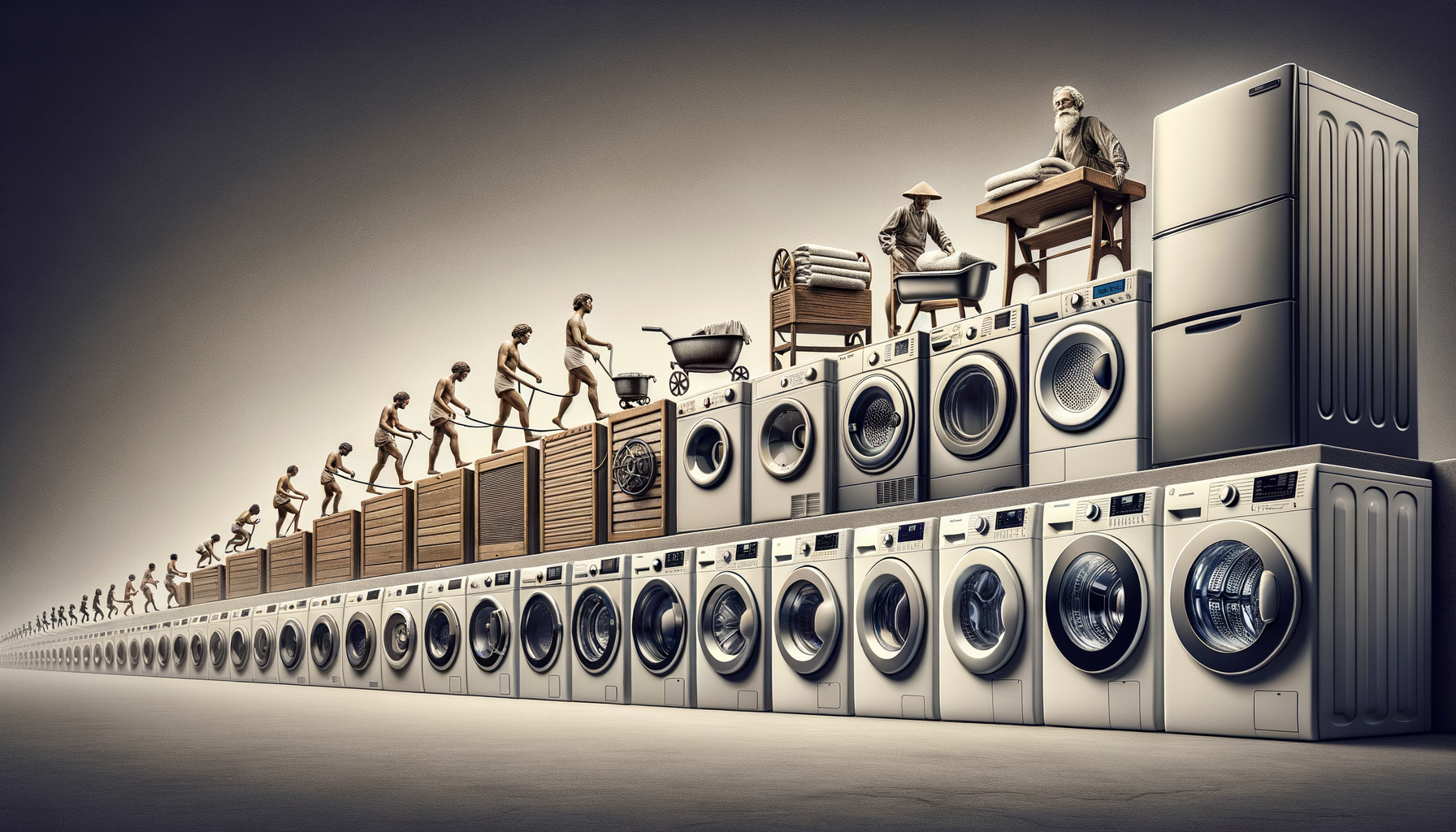The Birth of Laundry Appliances: A Historical Perspective
The journey of laundry appliances began in the late 19th century, a time when manual labor was the primary means of cleaning clothes. Before the advent of washing machines, individuals relied heavily on washboards, soap, and elbow grease. This process was not only labor-intensive but also time-consuming. The introduction of the first mechanical washing machines in the 1850s marked a significant turning point. These early models were hand-cranked and made of wood, providing a glimpse into a future of mechanized laundry.
As the industrial revolution gained momentum, so did the innovation in laundry technology. By the early 1900s, electric washing machines began to emerge, revolutionizing domestic chores. These machines were a luxury that only a few could afford at first, but they set the stage for the widespread adoption of laundry appliances in the decades to come.
The evolution of laundry appliances is a testament to human ingenuity and the ongoing quest for convenience. The introduction of automatic washing machines in the mid-20th century further streamlined the laundry process, allowing users to simply load clothes, add detergent, and let the machine do the work. This innovation not only saved time but also improved the quality of life, freeing up time for other activities.
Technological Advancements and Their Impact
The development of laundry appliances has been marked by continuous technological advancements. The introduction of features such as spin cycles, timers, and multiple wash settings has greatly enhanced the user experience. Modern washing machines are equipped with sensors that detect load size and fabric type, optimizing water and energy usage. This not only makes them more environmentally friendly but also reduces utility bills, a win-win for consumers and the planet.
Another significant advancement is the integration of smart technology. Today’s laundry appliances can be controlled via smartphone apps, allowing users to start, stop, and monitor cycles remotely. This level of convenience is particularly beneficial for busy individuals who can now manage laundry tasks on the go.
The impact of these technological advancements extends beyond convenience. By improving energy efficiency and water conservation, modern laundry appliances contribute to sustainability efforts. Additionally, the reduction in manual labor and time spent on laundry tasks has had a positive impact on overall quality of life, allowing people more time to focus on personal and professional pursuits.
Environmental Considerations and Sustainable Practices
As awareness of environmental issues grows, the laundry appliance industry has responded with innovations aimed at sustainability. One of the key concerns is water usage. Traditional washing machines can use up to 40 gallons of water per load, but newer models have significantly reduced this amount. High-efficiency (HE) washers, for instance, use about 20-25 gallons per load, conserving a substantial amount of water annually.
Energy efficiency is another critical factor. Modern appliances are designed to use less electricity, with many models earning Energy Star ratings. This not only helps reduce carbon footprints but also lowers energy bills, offering financial savings to consumers.
Moreover, manufacturers are increasingly using recyclable materials in the production of laundry appliances, further enhancing their sustainability. The push towards eco-friendly detergents and lower-temperature washes also aligns with efforts to minimize the environmental impact of laundry practices.
Incorporating sustainable practices in laundry routines is not just a trend but a necessity. By choosing energy-efficient appliances and adopting water-saving techniques, consumers can play a significant role in protecting the environment while enjoying the benefits of modern laundry technology.
Comparative Analysis: Past vs. Present
The transformation of laundry appliances from rudimentary hand-cranked machines to sophisticated, smart devices is nothing short of remarkable. In the past, doing laundry was a physically demanding chore that required significant time and effort. Today, it is a largely automated process that can be managed with minimal intervention.
One of the most noticeable differences is the level of convenience. Early machines required manual operation and supervision, while modern appliances offer features such as automatic dispensers, pre-set wash cycles, and remote control via mobile apps. This shift has not only made laundry more manageable but also more efficient.
Another key difference lies in the environmental impact. Older machines were not designed with energy or water efficiency in mind, whereas contemporary models prioritize sustainability. The use of less water and energy in modern machines is a significant improvement that aligns with global efforts to reduce resource consumption.
In terms of cost, while the initial investment in modern appliances may be higher, the long-term savings in energy and water bills make them economically advantageous. Additionally, the durability and advanced features of present-day machines offer greater value for money compared to their predecessors.
The Future of Laundry Appliances: Innovations on the Horizon
The future of laundry appliances promises even more exciting innovations. As technology continues to advance, we can expect to see further integration of artificial intelligence (AI) in laundry machines. AI could enable machines to learn user preferences and optimize wash cycles accordingly, enhancing efficiency and user satisfaction.
Another area of potential growth is the development of eco-friendly technologies. Research is underway to create appliances that use alternative energy sources, such as solar power, further reducing the environmental impact of laundry practices.
Additionally, the concept of multi-functional appliances is gaining traction. Future laundry machines may combine washing, drying, and even ironing functions into a single unit, offering unparalleled convenience and space-saving benefits.
The integration of virtual reality (VR) and augmented reality (AR) for maintenance and troubleshooting is another intriguing possibility. These technologies could provide users with interactive guides and support, simplifying repairs and enhancing the overall user experience.
As we look to the future, the potential for innovation in laundry appliances is vast. With a focus on sustainability, efficiency, and user convenience, the next generation of laundry technology is set to redefine how we approach this essential household task.












